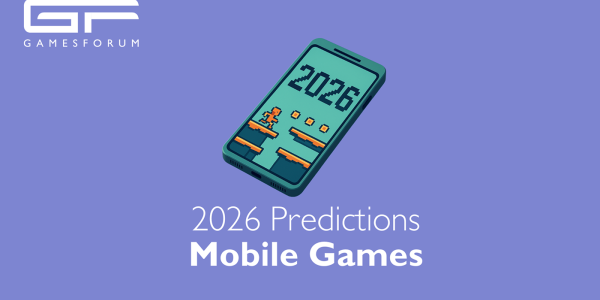Hype or opportunity? A definition of ‘hybridcasual’

Hybridcasual is perhaps as much framed by confusion as it is by opportunity.
By Will Freeman, Freelance Writer
Certainly, there’s a bounty of monetising potential in hybridcasual. The form’s poster child is Habby’s Archero – a game that made $8.5m in its first month, and is now banking $2m a month just over a year later, according to Sensor Tower data. Hybridcasual games can clearly monentise capably.
What’s less clear, however, is defining what a hybridcasual game is. At a time when hypercasual is thriving, and with traditional casual and mid-core games still enjoying plenty of success, it can feel rather implausible that there is capacity in the casual gaming movement for yet another niche approach.
So just where does hybridcasual fall on the spectrum of mobile gaming that runs from hypercasual to mid-core?

Mixed Monetisation
One thing that can be said with certainty is that the ‘hybrid’ in ‘hybridcasual’ comes from the hybridisation of in-app-purchase (IAP) and ad-based monetisation models. There’s an argument to say it is as simple as that; hybridcasual games blend contemporary monetisation models, while respecting the engaging potential of both casual and hypercasual game design. Equally, there’s a logic that ]p[osits ‘hybridcasual’ is now little more than a marketeer's buzzword. That viewpoint states that it has been overemphasised as a meaningfully new form, when the reality is that it isn’t much different from hypercasual and casual.
Of course, it isn’t quite as simple as either of those perspectives. When you ask why a developer or publisher might choose to hybridise monetisation approaches in a casual context, things get a little more interesting.
Looking under the bonnet of titles like Archero, hybridcasual can be understood as a response to the climbing Cost Per Install (CPI) of hypercasual games. Hypercasual never promised lasting retention or elongated lifetime value, with users often sticking around for little more than a week. But high numbers of users could theoretically be picked up cheap and quick, offering brief windows of high monetisation. That led to something of a hypercasual gold rush, and ultimately competition lifted those once-alluring CPIs. Hybridcasual remains popular and successful, but climbing CPIs in combination with short-form retention have inspired some developers and publishers to look elsewhere.
As such, hybridcasual emerged as an attempt to combine hypercasual’s accessibility with a more robust monetisation strategy, and the retention typically enjoyed by traditional casual and mid-core games. That means game design that imbues hypercasual accessibility and innovation with some of the progression models of straight-up casual games – think ability upgrade trees up ranking up a player character.

Accessible Progression
It is that approach – hypercasual appeal influenced by the player progression models of casual and mid-core games – that makes the hybrid model of IAP and ads so fitting here. Players are rewarded for their investment of effort and time with progress and abilities; that investment and reward means they are motivated to stick around – and IAP happens to be the ideal compliment, providing a way to accelerate or customise the journey of progression.
In fact, gameplay with upgrading and progression at its core is perhaps defining of hybridcasual - or at least successful hybridcasual. But hypercasual accessibility and simplicity remain key. Monetising players who pass through the game with hypercasual brevity will be important, and there ads are a natural fit.
If all of this is sounding like the secret to hybridcasual success might be rather simple, remember that these titles need to be immensely fun, novel and very easily picked up – all while also pleasing players who prefer slightly more demanding games. Play Archero, and you’ll find yourself a very hypercasual feeling game. Hammer the game’s name into Youtube’s search bar, and you’ll unearth a wealth of user-made strategy and tips videos that are more common to true hardcore mobile games. Hybridcasual games can be both those things.
The reason Archero sees a relative lack of competition for its crown as the defining hybridcasual release might well be down to the fact that getting the blend of accessibility and depth just right is a considerable game design achievement. As much as this should really be the case for every game ever made, hybridcasual success starts with a deeply experienced design team, and ideally one that knows how to get both hypercasual and casual/midcore right.
Certainly Uncertain
Hybrid casual remains a fairly new form, and the challenge of getting it right means that it has emerged and evolved slowly. There remains no detailed definition on which everyone agrees, and very often you find a little of the hybridcasual spirit in many games that try new things, or don’t easily sit under existing labels.
Perhaps it is better to think of hybridcasual not as an easily asserted model or precise framework for a game design, but as a mindset. Absolutely, blending IAP, ads, hypercasual and casual/mid-core is at the heart of hybridcasual. Courting low CPIs as well as healthy retention should always be a goal. Every hybridcasual game should really have an upgradable core at the heart of its game design. And yet all of that is a foundation for a great many different types of games, spanning genres and themes.
Really, hybridcasual is a journey, and one that is still being undertaken by the game industry collectively. Now is the time to explore, refine and understand what can be achieved by applying learnings from hypercasual to the more sustainable casual and mid-core success of the recent past.
Hybridcasual is bound to continue to be a talking point in the global game sector for time to come, and there’s every chance we’ll address it again in our blog and at our future events.
In the meantime, check out Archero if you haven’t yet, and consider that shaping what hybridcasual becomes is currently as much an opportunity as understanding it.
Keep an eye on our content to keep learning about this and other key themes at Gamesforum.











